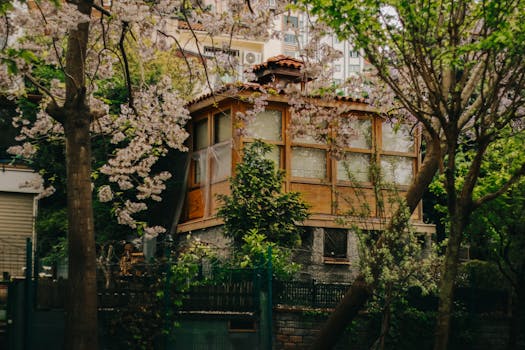
Urban Green Spaces: The Future of Outdoor Living in European Cities by 2025
Introduction to Urban Green Spaces
Urban Green Spaces are areas of greenery in urban environments, such as parks, gardens, and green roofs. These spaces are essential for the well-being of city dwellers, providing a range of benefits including improved air quality, reduced noise pollution, and increased opportunities for physical activity and social interaction. As we move towards 2025, it is clear that urban green spaces will play a vital role in shaping the future of outdoor living in European cities.
The Benefits of Urban Green Spaces
Urban green spaces offer a wide range of benefits, including:
- Improved air quality: Urban green spaces help to absorb pollutants and particulate matter, improving the air quality in cities.
- Reduced noise pollution: Green spaces can act as a buffer, reducing the impact of noise pollution on urban residents.
- Increased opportunities for physical activity: Urban green spaces provide opportunities for walking, cycling, and other forms of physical activity, which can help to reduce the risk of chronic diseases.
- Improved mental health: Spending time in nature has been shown to have a positive impact on mental health, reducing stress and anxiety.
Urban Green Spaces in European Cities
European cities are at the forefront of urban green space development, with many cities investing heavily in green infrastructure. For example:
- Paris: The city has invested in a range of green spaces, including the famous Luxembourg Gardens and the newly developed Grand Paris project.
- London: The city has a range of urban green spaces, including Hyde Park, Regent’s Park, and the Thames Riverwalk.
- Amsterdam: The city is famous for its canals and green spaces, including the Vondelpark and the Amsterdamse Bos.
The Future of Urban Green Spaces
As we move towards 2025, it is clear that urban green spaces will continue to play a vital role in shaping the future of outdoor living in European cities. With the increasing focus on sustainability and green infrastructure, we can expect to see even more innovative and effective urban green spaces in the future.
Conclusion
Urban green spaces are a vital component of European cities, providing a range of benefits for residents and visitors alike. As we move towards 2025, it is essential that we continue to prioritize the development of green infrastructure, ensuring that our cities remain sustainable, healthy, and enjoyable places to live.
Urban Green Spaces Focus Keyword and Future Development
Urban Green Spaces will continue to be a focus keyword in the development of European cities, with a focus on sustainability, green infrastructure, and innovative design. By 2025, we can expect to see even more urban green spaces, including green roofs, green walls, and urban forests.
Urban Green Spaces and the Environment
Urban green spaces have a significant impact on the environment, providing a range of ecosystem services, including air and water filtration, soil formation, and climate regulation. As we move towards 2025, it is essential that we prioritize the development of green infrastructure, ensuring that our cities remain sustainable and environmentally friendly.
Urban Green Spaces and Public Health
Urban green spaces have a significant impact on public health, providing opportunities for physical activity, social interaction, and stress reduction. By 2025, we can expect to see even more urban green spaces, including parks, gardens, and green roofs, which will help to improve the health and well-being of city residents.
Urban Green Spaces and the Economy
Urban green spaces have a significant impact on the economy, providing a range of benefits, including increased property values, improved air quality, and enhanced tourism. By 2025, we can expect to see even more urban green spaces, which will help to boost local economies and create new opportunities for businesses and residents.
Urban Green Spaces and Technology
Urban green spaces are being transformed by technology, with the use of green roofs, green walls, and urban forests becoming increasingly popular. By 2025, we can expect to see even more innovative uses of technology in urban green spaces, including the use of smart gardens, vertical farming, and urban agriculture.
Urban Green Spaces and Community Engagement
Urban green spaces provide opportunities for community engagement, including volunteer programs, community gardens, and public events. By 2025, we can expect to see even more urban green spaces, which will help to bring communities together and foster a sense of social connection and civic pride.
Urban Green Spaces and Education
Urban green spaces provide opportunities for education, including environmental education, outdoor education, and community education. By 2025, we can expect to see even more urban green spaces, which will help to promote environmental awareness, outdoor learning, and community engagement.
Conclusion
Urban green spaces are a vital component of European cities, providing a range of benefits for residents and visitors alike. As we move towards 2025, it is essential that we continue to prioritize the development of green infrastructure, ensuring that our cities remain sustainable, healthy, and enjoyable places to live.
Urban Green Spaces Focus Keyword and Final Thoughts
Urban Green Spaces will continue to be a focus keyword in the development of European cities, with a focus on sustainability, green infrastructure, and innovative design. By prioritizing the development of urban green spaces, we can create healthier, more sustainable, and more enjoyable cities for generations to come.





